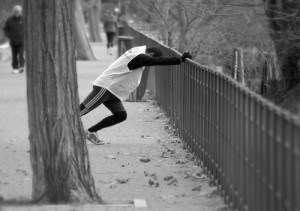Static (Traditional) Stretching
The problem with static stretches (very helpful after exercise) is that they desensitize muscle components for 15 to 20 minutes, decreasing power and vertical leap. Stretching can also mask pain that should serve as a warning that you shouldn’t be running or jumping on a leg, or lifting weights or swinging a bat, club or racket with your upper body.
Dynamic Stretching
It’s important to limber up before a workout, game or match using dynamic warmup movements like jogging in place, skipping with high knees, jumping jacks, arm swings and butt kicks. This gently stretches muscles as you’ll soon be using them in your activity.
Ballistic Stretching
Stretching by bouncing is not a good idea, because it can lead to injuries. An example of a bounce stretch would be lowering to touch your toes, and bouncing your hands off your toes as you move your upper body up and down.
Dynamic Before, Static After
Stretch with dynamic stretches before activity, and use static stretching after exercise to help get excess blood, lactic acid and other anabolic waste out of your muscles. Post-exercise static stretching will help you reduce pain and soreness later and improve your flexibility for better workouts or competition in the future.
Additional Resources
Society for Tennis Medicine and Science: Is Static Stretching for Tennis Beneficial?
Wichita State University: Static vs. Dynamic Stretching on Vertical Jump and Standing Long Jump
Physiology of Stretching; Types of Stretching; Bradford D. Appleton
